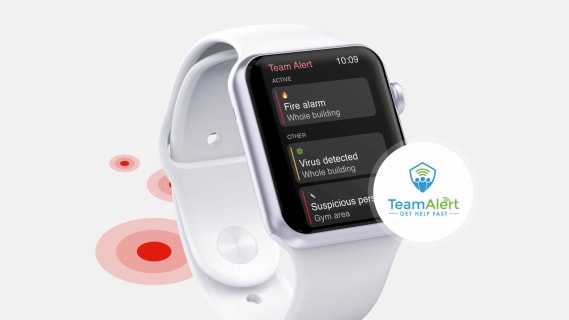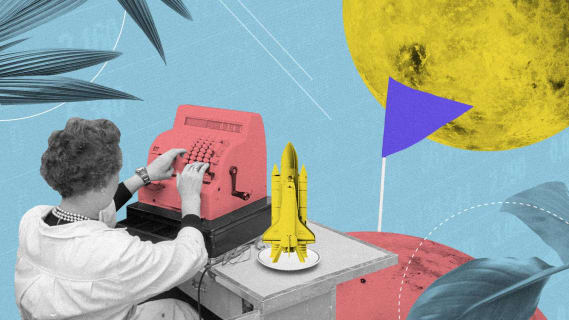Working with Boldare - FAQ
Before reaching out to us, some clients like to have a better idea of who we are and how we work. We are always happy to answer any questions that come our way, but for those of you that prefer reading about us first, we have prepared a list of frequently asked questions. Read on further to see if there’s anything here that you were wondering about!

Table of contents
4 questions about our methods
Working with Boldare goes far beyond simple coding and design. We work with a model called Full Cycle Product Development, where our clients are guided from the initial idea for a digital product through to its successful release and growth. With an innovative approach like this, it’s no wonder that so many of you have questions about different stages of development, and working with us in general. And that’s what the first series of questions will focus on.
What are your Discovery Workshops like?
A Product Discovery Workshop is our first opportunity to work together. It’s a virtual meeting with a set agenda where we will talk about your business needs and your digital product. The essence of these workshops is best described by one of our Customer Success Guides, Artur Belka:
This is also the time to cut to the chase and think about the functionalities that are soon to be brought to life, as well as discuss the process that we are all going to follow in the near future.
On a more practical note, these workshops usually take 1-3 days and during that time we will ask you questions about:
- your business background,
- target personas,
- your competitors,
- your goals.
But most importantly, this is when you will meet your product development team for the first time! If you are looking to find out more about Product Discovery Workshops, we have an article that can help:
Can you give me examples of how you support projects after release?
Here at Boldare, we approach each client differently and every project receives individualized support. In most cases, it looks like this: we dedicate a certain amount of time each month to gather feedback from the users, analyze it and plan our improvements. For example, one of our German clients receives from us three types of support:
- regular development support during business hours,
- hosting maintenance support during business hours,
- assigning a developer for a 24-hour standby for the last two days of the month.
As mentioned above, this is only an example of the type of support we provide. The most important thing to remember is this: our team’s focus always stays on your product.
What are the stages in Full Cycle Product Development?
Full Cycle Product Development (FCPD for short) is an approach to building digital products, such as mobile apps, websites, or any other digital product. The idea is simple: to guide you through every step of the process of building a digital product, from idea to product release. There are four stages (so-called phases) to consider: The issue of problem/solution fit is addressed by prototyping and an MVP, then come product-market fit and scaling. Each one of these phases has a different purpose:
- prototype, is when we prepare a clickable visualization of your idea,
- minimum viable product, when your product is built as a basic, yet functional version,
- product-market fit, when we take actions that will ensure that the product will answer real user needs,
- scaling, when we promote your digital product so that the user base grows exponentially.
The length of each phase can differ between different digital products as there is no one set rule on how long they should take to complete - it depends what you’re aiming to achieve. If you want to learn more about each phase and find out about the benefits of FCPD, we have an article that should clear things up for you:
How do you ensure a safe partnership?
Some clients like to be reassured that their product is in good hands. Luckily, we’ve been developing digital products for the past 17 years and we know that the ingredients necessary to cultivate a safe partnership are:
- transparency in everything we do,
- making everyone in the team available for the client to contact,
- regular communication over Slack or Jira,
- releasing working increments after every sprint,
- having a dedicated role of Customer Relations Executive responsible for making sure you are provided with the expected level of service.
If you wish to find out more about how to work with our remote development teams, check out the article below:
4 questions about working in Scrum/Agile
Scrum is a flexible framework but it has a structure that requires certain roles to be filled. The ones that clients ask about the most are sprints, scrum masters and product owners.
What are Agile and Scrum?
Scrum and Agile are broad subjects on their own, but in short they are innovative approaches to the development of digital products. Agile is a mindset that focuses on:
- responding to change
- building working software,
- collaborating with the client,
- interactions and individuals.
These are its main principles, as listed in the Agile Manifesto (source). Scrum is just one of the frameworks built on this mindset. If you are interested to learn more about Scrum, we have prepared an article explaining what it is:
What is a sprint?
The term “sprint” often comes up when talking about working in the Agile framework called Scrum. Without going into too much detail, a sprint can be treated as a unit of time, with each one ending up “producing a working iteration of the product.” When working in Scrum:
a product is developed in cycles, called sprints. During each sprint, which can last up to four weeks, the entire team is working towards a specific goal.
Working in sprints lets the team better focus on their goals, make better decisions, and work together more efficiently. If you are looking to find out what we do to prepare for a successful sprint, we recommend taking a look at the article below:
How involved should a product owner be in the development process?
Here at Boldare, the product owner is almost always someone from the client’s side. Clients who have no previous experience of working in Scrum or software development wonder if we will help them prepare for the role of product owner. The answer is: yes, we will. Before the first Product Discovery Workshops we can schedule a meeting with a scrum master, who will prepare you for the role of product owner.
Part of the product owner’s responsibilities involves attending Scrum team meetings, called Scrum events. It’s up to the product owner to decide which Scrum events he/she would like to attend. For example, the attendance of the product owner at daily meetings is a subject for a bigger discussion, which you can read more about in the article below:
Who is a Scrum Master?
A scrum master is the servant leader of a Scrum team that ensures that the development process is conducted in the right way. In the words of our scrum master, Basia Strąk, they are responsible for:
supporting the process on three levels: the developers, the product owner, and the whole organization.
This can take many forms: from facilitating meetings to strategizing and ensuring that the team is working effectively. The role of a scrum master is a complex one, and is best explained by one of our articles which compares it to that of a traditional manager:
As with any FAQs, these are only some of the questions that we hear on a daily basis. If you are looking for a development partner, but wish to learn more about any aspect of our partnership, feel free to contact us.
Share this article:












